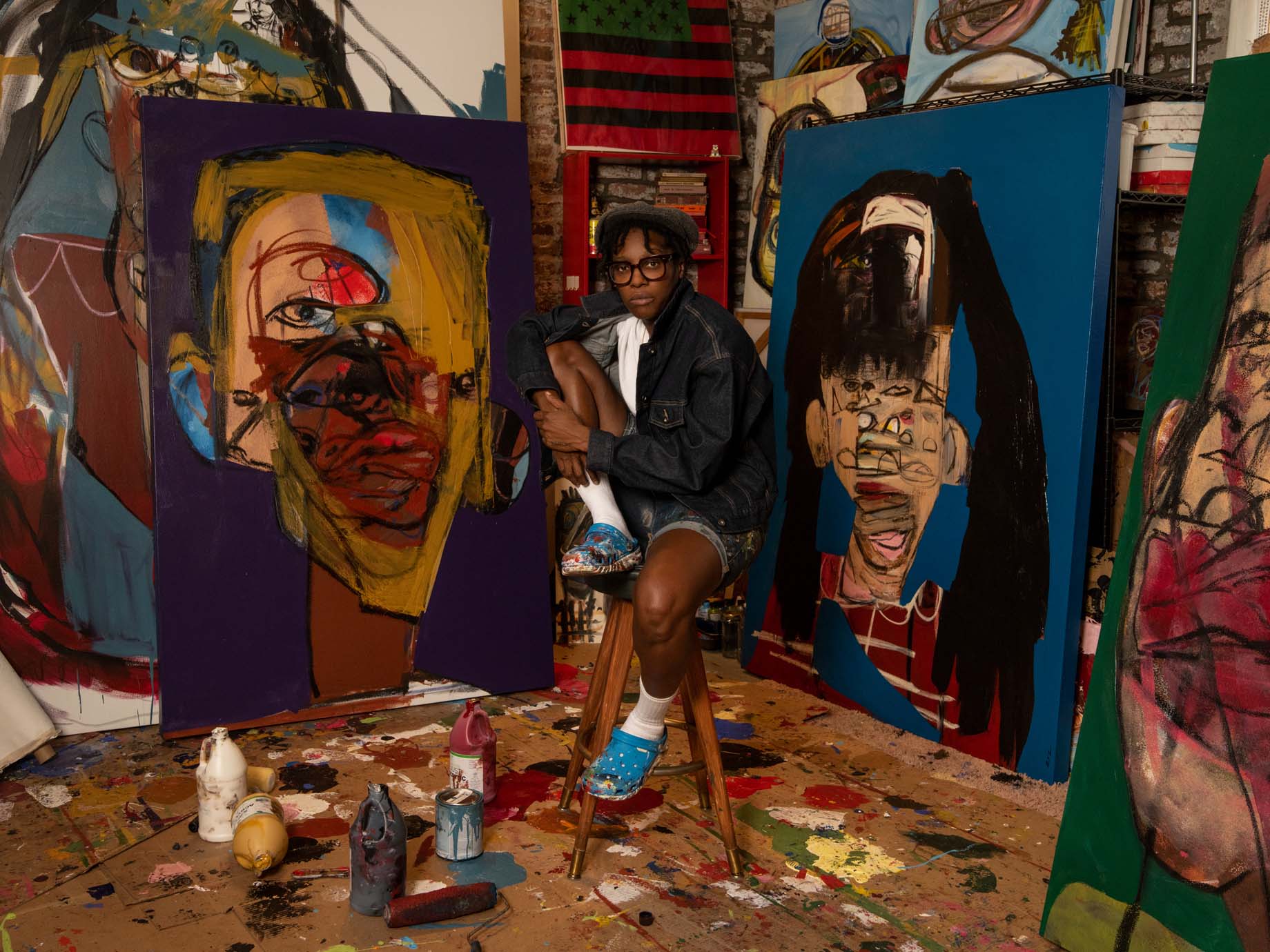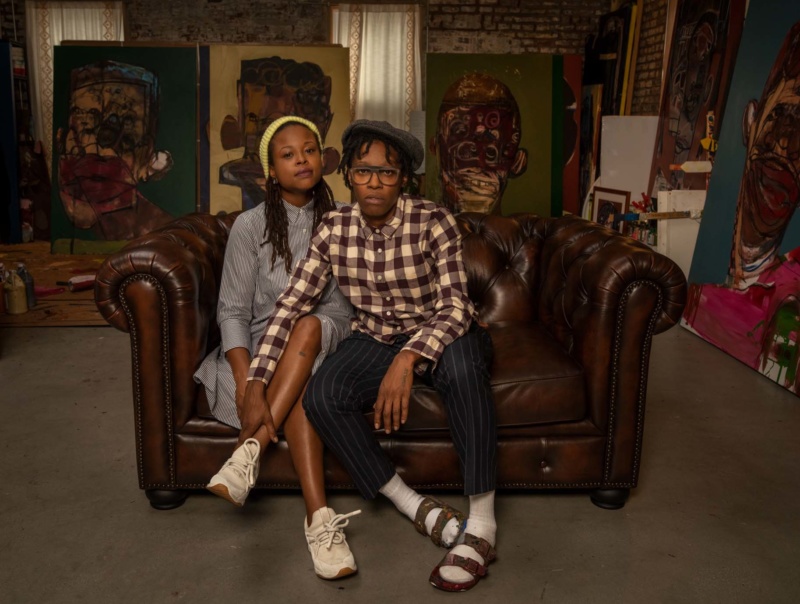
Stephanie Seidel: You paint large-scale portraits of deconstructed faces. Who is portrayed in these works?
Genesis Tramaine: The portraits are biblical saints. I am a devotional painter and I think it’s important to give a face to the saints, who have names but don’t have a real persona in the Bible. The images of saints that we know and that are projected at us are all white with blond hair—and we all know that that is not true. I think it’s a part of my journey to bridge these gaps. Often what propels me to get in the studio and gives me the energy is the Word.
STS: Do you mean scripture, the word of the Bible?
GT: Yes, that’ll get me going. I’ll read something that strikes me. Then I do the research on the word, Bible phrase, story or a specific character. I have to know who their parents and their family are. Then these “characters” come to life. I’m such a Bible nerd.

STS: What do you feel the medium of painting offers you in particular?
GT: I’m going to be honest with you: I can just close my eyes and I don’t have to be in charge of what the work is going to look like. I don’t have to worry about any mistakes. I can just let God be God. It’s the one moment of the day where I can completely let go. One of the greatest gifts that God has given me as a painter is that I get to be alone as often as I choose because solitude is an expected part of the painting process. As women we don’t get these spaces. We are not trusted with “alone spaces.” And as Black women, we are often not afforded those spaces.
STS: One of your recent works is titled Black Woman University (2020). The title really stuck with me. Could you talk more about it and how it relates to the broader framework of your practice?

GT: I painted Black Woman University during the height of the lockdown. I am convinced that the only thing that kept me present during that time was my belief in God as well as all the knowledge that the women gave me who have raised me. I am who I am as a Black woman in America because of the grace of God and because of these women. There are specific survival strategies that got me through this year – the things my Nana told me and the things I watched my mom do. All of that is encouraging and that’s the energy I took into that work. It was my way of honoring and kneeling before the presence of a Black woman in spirit.
STS: You’ve described your paintings as “portals.” I’m curious as to what kind of seeing or visibility you want to facilitate in your works. What are they entry points for?
GT: For me, the works are the best way—other than being on my knees in solitude—to connect to my higher self and the greater God that is within me. A fresh piece of canvas is like a watering hole. It’s a safe space. That’s what the portal is for me. I don’t necessarily know where the angels take me, but I know I’m safe. There are things that I’ve learned to pay attention to, to connect to the portal in the physical space of the studio. I pray over this space, I pray for the spirit of the Holy Ghost and then I receive the gospel: that is what is reflected in the paintings. Usually it looks like a portrait from afar. But up close, if you really study the details of work, you’ll notice a separate story. You’ll notice the gospel in the work.
I think it’s important to be honest about the fact that I am a vessel, creating a portal for someone else to find a greater sensory space of spirituality for themselves. I want people to feel invited in to the highest point of who they are spiritually. And I think that art can do that.



